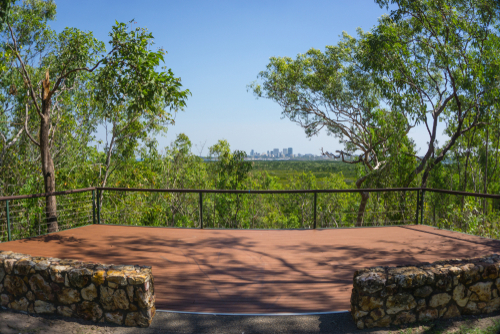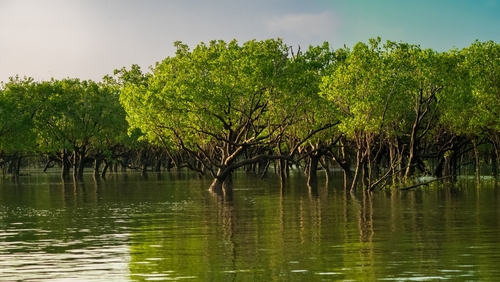Charles Darwin National Park is a small nature reserve just 5.5 kilometres from the Darwin CBD, making it the perfect destination for a day trip when in the area. It’s home to rich biodiversity, including wetlands that support 36 of the Northern Territory’s 51 mangrove species, as well as several historical sites linked to early Aboriginal occupation and Australia’s role in World War II.
Whether you’re a long-term Darwin local who just hasn’t got around to it yet, a new Northern Territory resident, or just visiting the area, this is your complete guide to exploring Charles Darwin National Park. Here, you’ll find everything you need to know, including the park’s history, what to expect when you get there, the best things to see and do, what to pack, and key visitor information.
If you ever need to send money to or from Australia, the simplest way is through the Remitly app. You can make secure transfers in a few clicks, even while relaxing at one of the park’s picnic areas, as major mobile providers offer good coverage throughout the park.
A park with a past
Although Charles Darwin National Park was only officially established in 1997, it holds layers of history that span thousands of years and connect key moments in Australia’s history.
The Larrakia people, Traditional Owners of the Darwin region, have lived here for millennia. The park is dotted with several Aboriginal shell middens, some dating back over 3,000 years. Larrakia culture is closely tied to the sea and the mangrove ecosystems that characterise the Darwin coast. When European settlers first arrived, the Larrakia shared their knowledge, food, and resources, shaping the cultural life of early Darwin. Today, they continue to maintain deep spiritual and cultural connections to this land.
The park and city are both named after the famous naturalist Charles Darwin. In 1839, Lt. John Lort Stokes of the HMS Beagle named the area Port Darwin in honour of his former shipmate, who had developed the groundbreaking theory of evolution aboard the same vessel during its earlier voyages.
In the late 19th century, Chinese settlers arrived to work on the Overland Telegraph Line. They began cultivating the mangrove fringes near the park, helping to create a thriving Chinatown that existed between 1874 and 1942.
By the 1920s, the Darwin region was emerging as an important military base. Hundreds of workers built facilities throughout the 1930s, and during World War II, Darwin became a key Allied hub for operations in the Pacific. The city was heavily bombed in February 1942, receiving more bombs than Pearl Harbour, and remnants of that era remain within the park. Visitors can still see semi-buried steel shelters, proof-testing facilities, and storage areas for explosives that once formed part of the city’s defence network.

Things to do in the park
Covering more than 13 square kilometres just minutes from the city centre, Charles Darwin National Park offers a mix of nature, history, and recreation. Here are some of the top things to see and do.
Enjoy the lookouts and views
Thanks to its elevated position overlooking Darwin Harbour, the park offers some of the best panoramic views in the city. The main lookout offers sweeping views of the harbour, city skyline, and surrounding wetlands, a perfect spot for photos. Stay a little longer after sunset to see the city lights sparkle across the water.
Explore the WWII displays
One of the park’s original concrete bunkers has been converted into a visitor centre featuring interactive displays about Darwin’s wartime history. You’ll find maps showing the locations of other WWII buildings scattered throughout the park, and even bullet holes left by air attacks. In total, 11 bunkers remain, all covered in earth and vegetation.
Walk or cycle the trails
The park’s extensive network of fire trails is perfect for bushwalking and mountain biking, with a range of distances and difficulty levels.
For mountain bikers, the Charles Darwin Mountain Bike Loop is a must. This 10-kilometre moderate-to-difficult trail winds through wooded areas and rocky terrain, combining fast-flowing sections with steep climbs, hairpin turns, and log jumps. Shorter trails include the relatively easy Wirraway Trail and the more challenging Spitfire Trail.
For those on foot, the 1.6-kilometre Mangrove Walk showcases various mangrove communities along the shore, while the 1.6-kilometre Service Trail Walk starts at the picnic area, goes past the WWII sites, and then through eucalypt woodland.
You can download the trail maps using the Avenza Maps App, which can be used offline with your device’s GPS, so you don’t get lost.
Pack a picnic
There are no food vendors or cafés within the park, but the picnic areas have everything you need for a relaxing lunch, such as gas barbecues, shaded tables, and toilet facilities (including disabled access). Bring your own supplies, and take all rubbish with you to help keep the park pristine.
Discover the natural environment
The park’s landscape is a mix of undisturbed mangrove forests and expansive mudflats, creating a haven for wildlife and native plants. It’s also a great place to learn about traditional Aboriginal bush medicine.
Fascinating in their own right, these environments are also home to a range of animal species, including invertebrates, birds, and reptiles. Keep an eye out for wallabies, kangaroos, emus, and a variety of bird species, including the Hooded Parrot and Mangrove Grey Fantail. Bring binoculars if you enjoy birdwatching, and maintain a safe distance from wildlife.
Planning your visit
How to get there
Charles Darwin National Park is just 5.5 kilometres from the city centre. Take Tiber Brennan Drive out of the city, and after about three kilometres, turn right at the sign for the park. From there, you’ll need to drive another 1.5 kilometres to the turn-off. The whole journey usually takes less than 10 minutes.
Best time to visit
The park is open year-round, but it’s best to visit during the dry season from April to September, when temperatures range from 20-30°C. If you do visit during the wet season from October to March, go early in the morning for cooler conditions and fewer midges.
Opening hours and fees
Entry to the park is free, as are all its facilities, including parking. It’s open daily from 8 am to 7 pm. If you’re visiting with a group, Community Engagement Officers and Park Rangers are sometimes available to provide short talks. These should be booked in advance.
What to bring
- Water bottle – Even in the cooler months, walking and cycling can make you sweat. Bring plenty of water, at least one litre per person per hour. There are taps and drinking fountains in the picnic area if you need to refill.
- Hat and sunscreen – The NT sun is unforgiving, and it can be hard to stick to the shade when exploring the park. Protect yourself with a wide-brimmed hat and plenty of sunscreen. Reapply every two hours.
- Insect repellent – Mosquitoes and other insects are common. Avoid itches and bites by wearing insect repellent.
- Sturdy shoes – Wear enclosed and supportive footwear, as there are lots of rocks and extensive undergrowth that can injure your feet. Thongs are not appropriate for exploring the park.
- Binoculars – There are many fascinating bird and reptile species to observe in the park. Binoculars let you observe wildlife safely from a distance.
- Picnic supplies – While there are picnic areas and free barbecues in the park, there are no food vendors within the park itself. Bring your food with you, or visit nearby cafés such as Moorish Cafe, Tim’s Surf and Turf, or The Rabbit Hole.
Other things to remember
- Follow park safety signs; they’re designed to orient you and keep you safe. Keep to the designated roads and tracks.
- Remember that strenuous activity in the Darwin heat can lead to issues such as heat stroke. Plan your activities accordingly and monitor one another, especially children and older group members.
- Don’t feed the native animals, as it’s not good for their health or natural lifestyle.
- Watch out for crocodiles! While saltwater crocs are removed from Darwin Harbour through ongoing crocodile management, they can enter undetected, so be vigilant near the water.
- Swimming is not recommended in the park due to the possible presence of deadly box jellyfish.
- Fires are prohibited anywhere in the park.
- Pets are not allowed, so you’ll need to leave your four-legged companion at home.
- All major mobile providers offer coverage within the park.
- No drones are permitted in the park.
Charles Darwin National Park is relatively small; it’s just ten minutes from Darwin city centre, making it extremely easy to visit. It’s a haven of mangrove zones and eucalypt forests that support unique plant and animal life.
The park also contains historical sites that explore the region’s traditional Aboriginal communities and Australia’s World War II history. There are great walking and bike trails for anyone who wants to get active, and access to the park is completely free. Visit the Charles Darwin National Park page on the Northern Territory’s parks and reserves website to start planning your day trip to this fascinating local gem.
FAQs
Is Charles Darwin National Park free?
Yes, entry to Charles Darwin National Park is completely free, and all its facilities are free to use, including parking. On weekends and holidays, arrive early to reserve a free gas barbecue.
What is there to do in Charles Darwin National Park?
There is plenty to do in Charles Darwin National Park. You can explore the mangrove and woodland environments along walking trails, or take on one of the dedicated mountain bike trails for a faster-paced adventure. You can also visit historical sites, including ancient Aboriginal shell middens and bunkers surviving from World War II.
